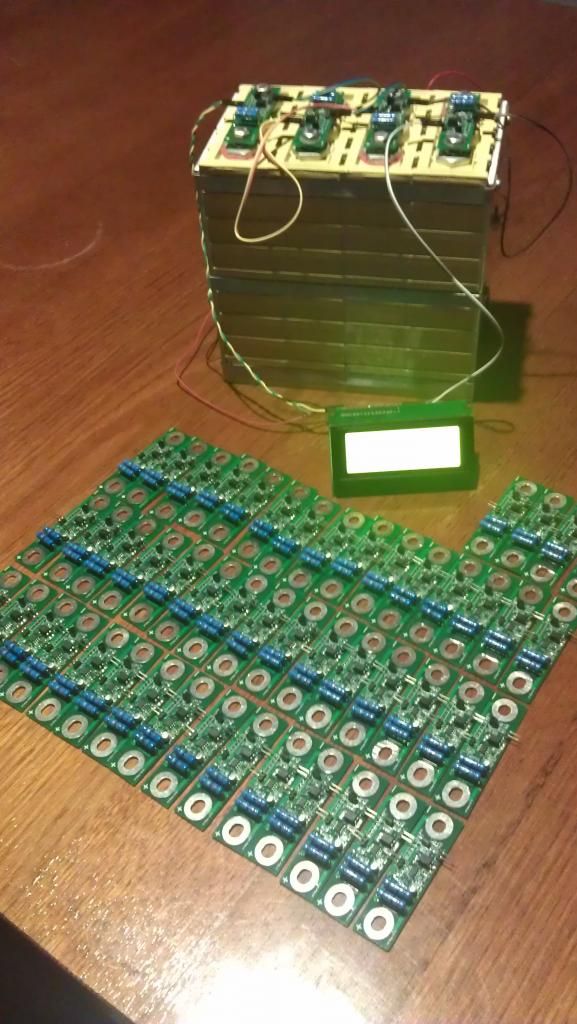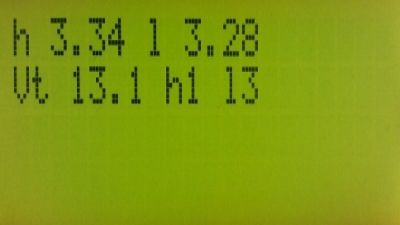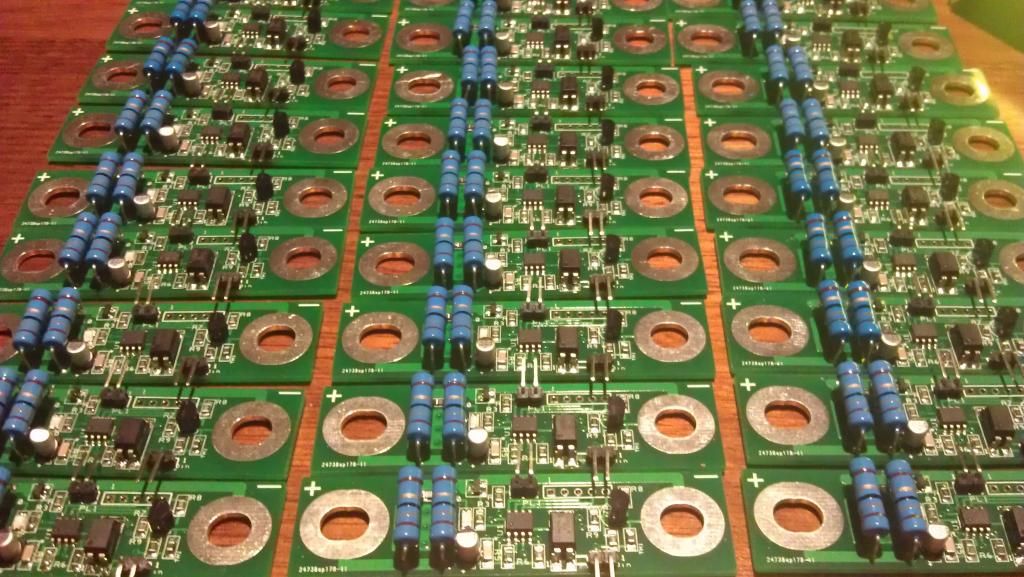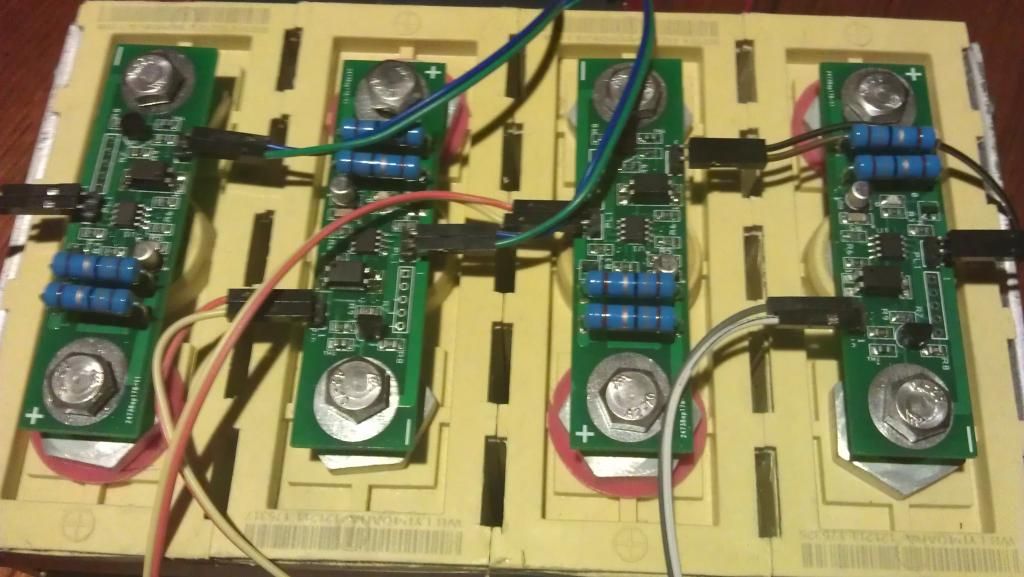Finally finished enough cell top modules (53) to cover the number of cells going into the car (48). All built and tested.

Here's some pictures of the result. Not shown in the picture is the many sleepless nights, strained eyes and singed fingers.

This is the system described in the
Low Cost BMS thread.
I used a modified version of the cell top PCB. Another forum member, Arber333 made many changes to the PCB for me. Mainly to suit the smaller terminal spacing on the 40Ah cells. But he also added a resistor and LED in parallel with the load resistors so that i can see when they are in use. Very handy.
I have 4 Winston 40Ah cells that i am using for testing. Another 44 cells will be added later. The communications connections between cells will be changed for shorter lengths later to make things neater.

I changed the LCD from the 2 line version to a 4 line version as there are some additions to the set up that i want to add later that will require more screen area.
I also changed the master modules micro controller to a 16F1847. This is a drop-in replacement for the 16F1827, but it has more memory which should increase the number of cell top modules it can keep track of.

As you can see the cells are quite out of balance due to testing each of the cell top module's load resistors. These cells will now be individually charged and brought back into balance. Cell 1 is the highest with 3.34v and cell 3 is the lowest with 3.28v.
Some more pictures.


I mounted the load resistors with a bit of air space between them and the PCB to allow for better heat dissipation.
If i built them again i would swap the two capacitors around so that the capacitor with the metal can wasn't so close to the load resistors.
I didn't put any pins in the programming port as i found it wasn't necessary, simply putting the programmers pins in the holes and keeping a small amount of sideways pressure gave good contact for the couple of seconds required to program the micro controller.
This saved me soldering 265 extra connections and it also reduces the chance of a stray communications connector coming into contact with a pin on the programming port.